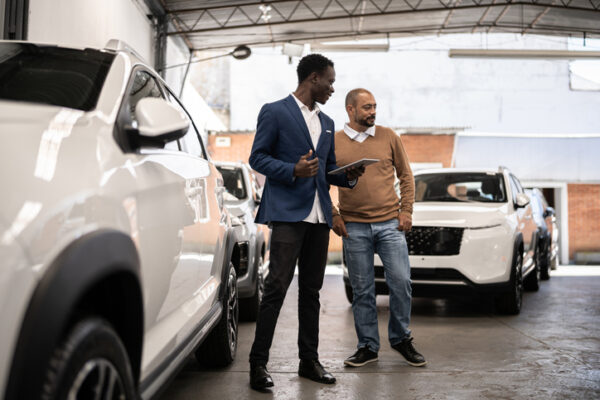Contributor: Casey Taylor, VP of Client Success/CivicScience
The pandemic has brought unprecedented disruption to the automotive market, from used car price spikes to rising fuel costs forcing consumers to dream about electric vehicles. Has the dust started to settle, or is there still more change to come?
According to data from CivicScience, family stage consumers (those that are married between ages 35 and 54) made up the bulk of new car buyers over the past year. Additionally, there are another 6% of consumers who are already planning to buy in the next year. Age differences tend to reveal a lot about preferences, with American made cars most appealing to more conservative and older consumers, while young people gravitate towards Japanese and other foreign automakers.
The decline of American made car interest over the past four years is an important trend to watch: with gas prices on the rise and domestic giants like Ford, Chevy and GM ready to roll out new fleets of electric and hybrid vehicles, it might be time for Tesla’s tight grip on the EV market to loosen a bit. Younger customers are more inclined to be interested in electric cars than any other cohort, and the EV wars between domestic, import and disruptor car brands is one to watch, particularly if the energy crisis continues unabated. Intent to buy an electric vehicle has steadily climbed to nearly one in four, according to CivicScience, and self-reported ownership has doubled since 2019.
If the electric car rush continues, it will be interesting to track what impact it has on the consumer who specifically looks for new technology in a car, currently a much different profile than the average auto buyer. For auto brands trying to reach them now, this is a male dominant and highly affluent buyer profile that has already fled the city for the suburbs and is extremely loyal to the brands they buy. Brands like Ford, that may be considered old hat to this buyer, probably have more work to do to convince them that the F-150 Lightning is as attractive as something that may feel more disruptive, like a Tesla.
One other central area of disruption has been increased online shopping, which does not appear to be slowing down. However, more than three in five consumers still prefer shopping for a car in person. One of the key things to know about online car shoppers is that they still often say they “showroom,” meaning they like to check something out in person before buying it online. So, while online car dealerships will continue to disrupt the buying process and likely steal share from existing retailers, that in-person stop is an opportunity for savvy dealers–through customer service, great deals or otherwise–to make sure that whatever is available online is less appealing than what is on the lot.
Radio continues to be the way to reach consumers who make up a high proportion of the buying market. The pandemic has shifted listening habits–those who work from home that no longer have the same commute, for example, are now listening later in the morning than they would’ve otherwise. However, those shifted listening habits can translate to a big victory for car dealers: different times of day correspond to different types of shoppers. What’s notable is that late morning listeners look to be a little less picky overall: those consumers are significantly more likely than listeners at other times to say they buy whatever is on the lot when their preferred car isn’t available. For promotions or messaging about clearing stock, that might be the time to strike, while other times of day tend to be about messaging to specific consumer segments in market. For example, early a.m. times are more popular for working class consumers that have higher interest in trucks and other utility vehicles.
RAB members can view the presentation on demand here.


